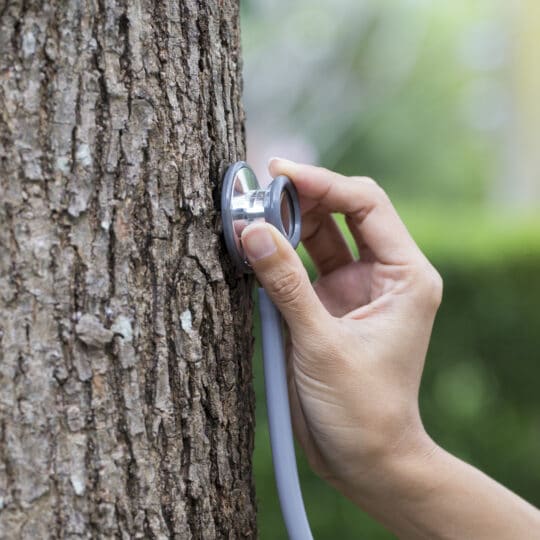Conducting a Plant Health Evaluation
For the Wellbeing of Your Plants
Posted
February 3, 2022

How healthy are your plants? If you’re not sure, just look at them, they may be telling you everything you need to know. Completing a plant health evaluation takes know-how and observation. Learn how to spot the signs of plant problems and help ensure your plant is the healthiest it can be.
Common Types of Plant Problems
Many factors can affect the health of a plant:
- Weather
- Soil
- Insects
- Animals
- Disease
- Environment
- Neglect
However, there are only so many ways a plant can show signs of distress, including, but not limited to:
- Leaf color
- Leaf drop
- Abnormal growth
- Weak branches
Therefore, it’s important to notice any changes in your plant, but there could be different reasons behind it. This is why it’s helpful to have a plant care professional help diagnose the issue by completing a plant health evaluation.
Completing a Plant Health Evaluation
The best chance of ensuring your plants are living their best lives is to familiarize yourself with the type of environment in which they can thrive. The right amount of water, light, and nutrients are all important in its growth and development. However, even the best care can lead to certain issues. This is why the second-best chance of ensuring your plants are living their best lives is quickly and accurately diagnosing any issue that may arise.
The first step in evaluation is simply looking at your plant.
- How do the leaves look?
- Are there any visible signs of infestation or decay?
- Do branches easily break?
If you notice any issues, the next step is to assess the site. Is it getting enough light? Is the soil too dry? Does it have room to grow?
The reason behind the plant problem could come from under the surface. To find the root of the problem, you may need to evaluate the roots. If it’s not easy to see them, try testing your soil first, and if adjusting the amount of nutrients doesn’t solve the issue, it may be time to dig deeper.
If you’ve had the plant for a while, take into account its history. Has it looked like this before under certain conditions, such as season or time of day? Newer plants may be harder to analyze, but it’s never too late to start to document any changes and the current conditions.
Professional Diagnosis
There are plenty of reference materials to help you diagnose an issue. However, since so many issues could have multiple contributing factors, it’s best to consult a professional for a more thorough evaluation. Contact Elite Tree Care if you are having trouble getting to the root of your plant issues. Our specialists can help diagnose the problem and offer steps to get your plant back in top shape.